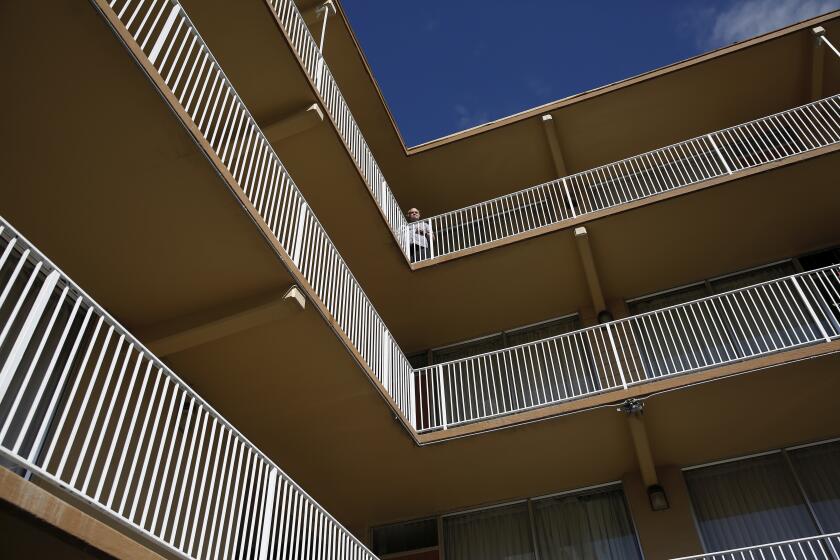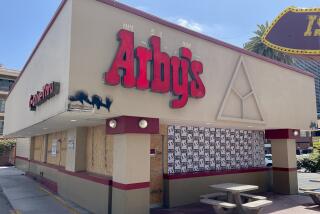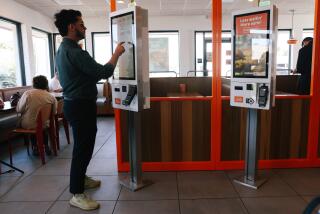Sweetgreen and Shake Shack are going all in on drive-throughs. They’re not alone
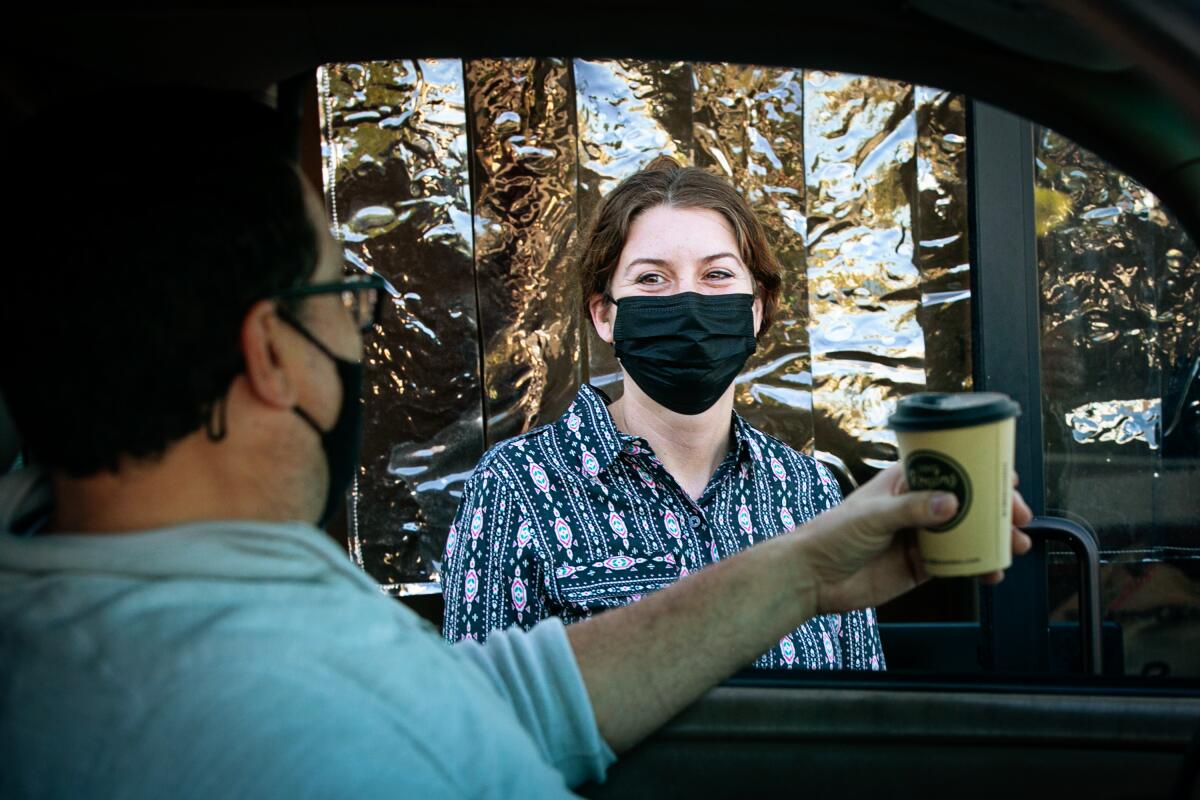
- Share via
Drive-throughs are on special order at many restaurants as owners race to put customers at ease during the pandemic and prepare for a food service future increasingly ruled by convenience.
Quick-service specialists such as Sweetgreen and Shake Shack are planning their first stores with drive-through lanes, while existing operators are scrambling to build new car service portals or jerry-build temporary openings to serve customers behind the wheel.
The efforts run counter to recent urban planning thinking in which some cities seek to limit new drive-throughs to reduce auto emissions and litter, bring down obesity and improve pedestrian safety.
Drive-throughs and outdoor dining patios are rare bright spots in the restaurant industry, which has seen many businesses fold or endure a sustained battering from COVID-19 restrictions on communal dining and the reluctance of many diners to venture far from the safety of home.
Some eating places around the country have even revived carhop service, a dine-in-your-vehicle option that presumably contributes to restaurant and patron survival. (On Friday, Los Angeles County officials removed the ban on outdoor dining but imposed restrictions.)
Investors have taken note. Los Angeles retail real estate brokers at CBRE said properties with drive-throughs have jumped to 90% of their sales business from about half in the last 12 months as investors flee from strip centers and other struggling retail venues to places were customers are actively spending money.
COVID-19 anxiety has lifted sales at restaurants people can patronize by briefly rolling down their car windows, said shopping center landlord Sandy Sigal, president of NewMark Merrill Cos. The Woodland Hills landlord controls 450 restaurants in 85 U.S. centers.
“The stores that had drive-throughs during this pandemic, their business went off the charts,” Sigal said, citing data his company collected.
Drive-throughs are easy to build, he said, but not easy to operate when customers pour in.
“What’s truly hard is to make sure that line keeps moving,” he said, and hand customers their food within 10 minutes. “Who wants to spend their lunch hour sitting in a car?”
While drive-throughs have long been associated with burgers and other inexpensive fast food, more pricey competitors in the fast-casual category such as Chipotle, Shake Shack and Sweetgreen are moving into drive-throughs, according to a recent report by Credit Suisse.
Sweetgreen has been eyeing drive-throughs of its own for a decade, co-founder Nicolas Jammet said, and had been making plans in recent years to build them.
“Then COVID hit,” he said, “and we looked at our customers and said, now is the time to fast-track this and bring it to life.”
The national restaurant chain, which is based in Culver City, positions itself as a healthy-food-oriented competitor to the cheap and fast hamburger purveyors that pioneered the drive-through market and still dominate it.
During the pandemic, “a lot more customers are reluctant to come inside,” said Jammet, who is co-chief executive.
Sweetgreen has historically catered to a tech-savvy customer base, he said. Even before the pandemic, about half of the orders at Sweetgreen’s 120 restaurants were placed and paid for digitally, for pickup or delivery.
The company strives to “reduce friction” for customers and make ordering nutritious food “fast, convenient and cool,” Jammet said. Drive-throughs are part of that strategy and will become more common as Sweetgreen expands beyond city centers into the suburbs.
The first Sweetgreen with a drive-through is set to open later this year in Highlands Ranch, Colo., a neighborhood south of Denver.
Drive-through customers will be required to order ahead on the company’s phone app. Another option for the drivers will be to park in a pavilion with intercoms where they can order salads, warm bowls and other menu items to be delivered by carhops.
“We’re going to bring our food to the same kind of convenience channels that so many Americans are used to,” he said.
Upmarket New York burger joint chain Shake Shack, which has been operating on a to-go-only basis during the pandemic, announced in October that it will open its first drive-through late this year, with as many as eight by the end of 2022.
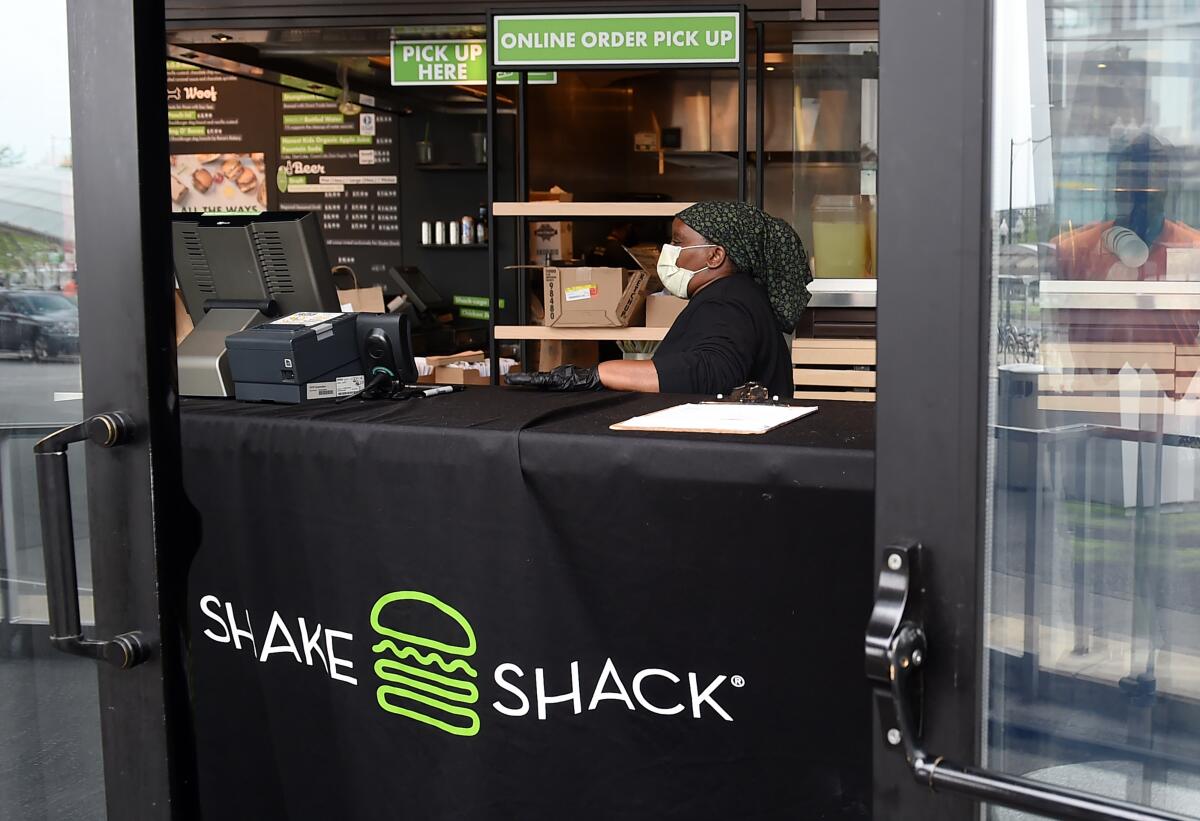
Chief Executive Randy Garutti in an earnings call described them as “a modern version of the traditional drive lane experience,” and a rendering of a prototype in trade publication QSR Magazine showed three car lanes — two for drive-through service and a third for pick-ups placed through phone apps.
Chipotle Mexican Grill introduced drive-throughs two years ago and opened its 100th “Chipotlane” in July. The Newport Beach company said such lanes will be included in 60% of its new stores, even though they require more staff than restaurants without drive-throughs.
New Chipotles with drive-throughs outperformed new Chipotles without them by 25% last year, according to Credit Suisse.
Such numbers are driving investment dollars to drive-throughs, said property broker Alex Kozakov of CBRE. “All the demand from investors has shifted to that sector” from other types of retail real estate, he said, and lenders are comfortable backing it.
Other businesses people can patronize without getting out of their cars are also prospering during the pandemic, including drive-through carwashes and rapid vehicle maintenance services such as Jiffy Lube.
Motels, long the orphans of the hospitality industry, stand to gain popularity as people hit the road again and seek to avoid interior spaces.
Investors “feel that that’s where the most security is right now,” Kozakov said. “Whether it’s today or in the future, if we have a pandemic, [drive-throughs] will be able to survive.”
One of the growing drive-through categories during the pandemic has been coffee, he said, a daily staple many are unwilling to forgo.
Starbucks is the java juggernaut, but one mom-and-pop caffeine shop in the Cypress Park district of Los Angeles has rigged up a temporary solution to compete by turning its side door for deliveries into a drive-through.
“We’ve been getting a lot of customers from the Starbucks down the street” who notice that the car line is shorter at 1802 Roasters, co-owner Christian Degracia said.
The neighborhood coffeehouse on Cypress Avenue has been open about a year and did 95% of its business through the drive-through when outdoor dining was banned by health officials, he said.
“At first we were concerned folks wouldn’t buy into it,” Degracia said. But “the response has been great. This has been working out for us so far, even with the shutdown.”
He’ll miss having car service when indoor dining returns and he needs the door again, he said. “Although the shop wasn’t built to be a drive-through, it was definitely fun operating it as one.”
The popularity of drive-throughs in a pandemic shouldn’t surprise anyone, Bay Area real estate consultant David Greensfelder said.
“People still want to eat out,” he said, “or are having a hard time shopping. It gives them another option.”
Are you new to drive-in dining? Here are some tips to help you master it.
Rolling out new plans for drive-throughs during a pandemic may also be a wise business move for operators concerned about whether local officials will approve them, Greensfelder said.
A common city government concern about drive-throughs is that lines at popular restaurants sometimes snake onto public streets and may block traffic.
“Is a company using COVID as an opportunity to move into another channel they weren’t in before? It will be easier to get city approval. Carpe diem,” Greensfelder said.
Although drive-throughs will always have appeal, most people will want to return indoors to eat when they feel the pandemic has passed, he said.
“People kept driving after the oil embargo,” he said, “and flying after 9/11.”
More to Read
Inside the business of entertainment
The Wide Shot brings you news, analysis and insights on everything from streaming wars to production — and what it all means for the future.
You may occasionally receive promotional content from the Los Angeles Times.
